
Thaıdene Nëné badı xá (Working with Thaidene Nëné)
Thaıdene Nëné National Park Reserve
How to pronounce Thaıdene Nëné badı xá
(MP3 80 KB)
Thaidene Nëné Relationship Plan, the management plan for Thaidene Nëné
Thaıdene Nëné badı xá will be the first relationship plan for Thaidene Nëné. The content is foundational, setting out what is needed to ensure that countless generations to come will be able to care for and benefit from Thaidene Nëné. This ten-year plan (2024-34) includes a set of guiding principles, a long-term vision for Thaidene Nëné, and a series of goals and objectives that will help us make progress towards achieving the vision.
A series of workshops engaging Indigenous knowledge holders, community members, and key partners was held to develop the concept for the plan, identify broad goals, and confirm the vision.
Thaıdene Nëné Xá Dá Yáłtı (the operational management board for Thaidene Nëné), Łutsël K’é Dene First Nation, Northwest Territory Métis Nation, Parks Canada, and the Government of Northwest Territories invited input on the draft plan, Thaıdene Nëné badı xá in March and April 2024. The aim was to ensure Indigenous governments, stakeholders, and Canadians had an opportunity to provide input on the future direction of Thaidene Nëné. The engagement/consultation period is now closed. Feedback received will play an important role in the development of this first plan for Thaidene Nëné.
What is a relationship plan?
Protected areas such as Thaidene Nëné are often guided by management plans. These plans set out a long-term vision, specific objectives, and provide strategic direction. However, the term “management” implies control and ownership over the land, as well as a level of separation between land and people that does not exist within Indigenous worldviews. We have chosen to name this management plan a relationship plan. This designation highlights the importance of the relationships between the descendants of the Thaidene Nëné ancestors, the land, water, and animals.
The plan will be reviewed every ten years. This provides continuity and ensures the plan stays relevant.
Nuwé ch’anıe
Nuwé ch’anıe is the principle that describes Dene values and knowledge systems, with responsibilities to care for the land, water, and wildlife. Nuwé ch’anıe encompasses cultural, linguistic, political, and ecological understandings of the relationship the original Indigenous peoples of the area have with Thaidene Nëné. Ensuring nuwé ch’anıe is practiced, nurtured, and passed on is vital for the well-being of people and ensuring cultural continuity.
Thaıdene Nëné badı xá is built on the foundation of nuwé ch’anıe that has conserved Thaidene Nëné for millennia. The plan draws on the strength of nuwé ch’anıe and provides direction on how we will continue to steward Thaidene Nëné for generations to come.

Guiding principles
Seven principles guide operations and planning. The overarching principle is nuwé ch’anıe. Six additional principles ensure work is being done in the right way and with respect. Each principle is important for good relationships and planning.
- Nuwé ch’anıe
- Economic reconcillation
- For future generation
- Consensus
- Accountability
- Cultural continuity
- Collaboration
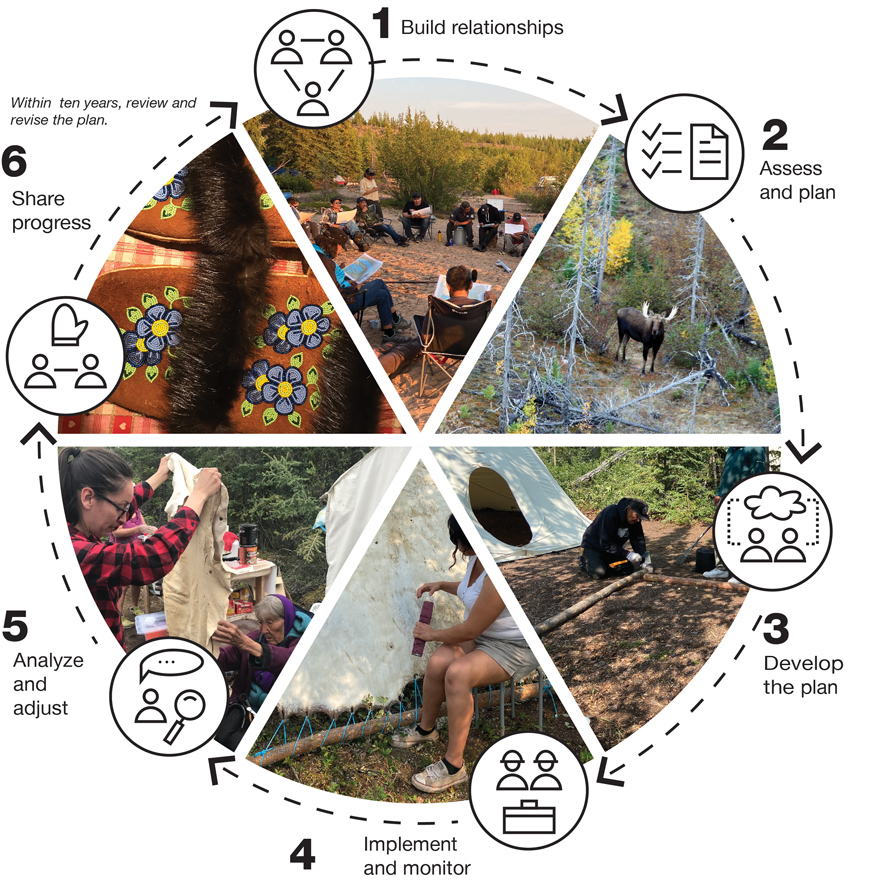
What hide tanning can teach us about planning
Throughout the process of developing Thaıdene Nëné badı xá, Thaıdene Nëné Xá Dá Yáłtı took inspiration from the practice of hide tanning, which is integral to Indigenous communities with connections to Thaidene Nëné. Hide tanning offers an appropriate cultural metaphor to demonstrate the steps of planning.
-
1 Build relationships
2 Assess and plan
3 Develop the plan
4 Implement and monitor
5 Analyze and adjust
6 Share progress
** Within ten years, review and revise the plan
| NOW | We are seeking input on the draft plan through consultations, community meetings and online tools. | |
|---|---|---|
| Late spring / early summer |
We will be revising the draft plan. If there are significant changes, we will be reviewing these with Indigenous governments | |
| Summer / fall | We will be finalizing the draft and submitting the plan for approvals. |
Draft plan
To learn more about what is in the draft plan you can:
- Read the draft plan
- Tsąkuı Thedá Dezé - access prohibited in the river corridor
- Tsąkuı Thedá (Parry Falls) - permission required from Łutsël K’é Dene First Nation
Read summaries of key sections:
Goal 1 – Promote nuwé ch’anıe
Ensuring nuwé ch’anıe is practiced, nurtured, and passed on is vital for the wellbeing of people and the land. Nuwé ch’anıe is strong. However, as Elders pass on, their knowledge of language and culture is at risk. Sacred places within Thaidene Nëné must be protected, and the stories that are told about them must be shared; Aboriginal and treaty rights must be upheld; Dene Yatı must be protected and revitalized; and youth must be mentored.
| Objectives |
Targets / Indicators |
|---|---|
|
1.1 The descendants of the Thaidene Nëné ancestors maintain their relationship with Thaidene Nëné and cultural continuity is preserved. |
1.1.1 Harvesting within Thaidene Nëné by the original Indigenous peoples of the area is encouraged. 1.1.2 Indigenous governments apply their own protocols for their members’ use of Thaidene Nëné. |
| 1.2 Thaıidene Nëné Xá Dá Yáłtı uses Dene Yatı in governance, planning, and community engagements. |
1.2.1 Thaıdene Nëné Xá Dá Yáłtı meetings, workshops, community engagement sessions, documents, presentations, advertisements, and other communications include Indigenous languages. 1.2.2 Indigenous placenames are used in Thaidene Nëné documents, maps, reports, presentations, brochures, videos, etc. |
| 1.3 Young people are learning nuwé ch’anıe from the Elders. |
1.3.1 Land-based Elder and youth programming is delivered in Thaidene Nëné. These programs include sharing language, traditional knowledge, spiritual connections to the land, and Indigenous laws and stories of Thaidene Nëné. |
| 1.4 Knowledge of cultural resources is recorded to share with future generations. |
1.4.1 Important cultural resources are identified and their condition is documented. |
Goal 2 – Sustain the ecological integrity of Thaidene Nëné
Together, the water, soil, rocks, plants, animals, migrations, wildfires, freezing, thawing, and all other parts and processes in the ecosystems of Thaidene Nëné have created a landscape that, for countless generations, has supported nuwé ch’anıe. If Thaidene Nëné remains healthy, it will continue to offer this prosperity. However, Thaidene Nëné cannot speak for itself. We have a responsibility to pay attention to what is happening on the land and to take action to protect it.
Wildfires, extreme weather, and other climate induced impacts have not been experienced before at this magnitude. Climate change creates a significant unknown with factors that are less predictable and more severe. Changing snow and ice patterns, shifting wildlife populations and habitats, increase in invasive species, increased intensity of wildfires, and a changing landscape due to permafrost thaw are just a few examples of observed differences. These rapid changes and industrial development adjacent to Thaidene Nëné are placing increased pressure on wildlife and their habitats.
Along with the uncertainty of the future, the current baseline condition of Thaidene Nëné is not fully understood. Monitoring the state of Thaidene Nëné’s ecological integrity is important to help respond to changes in the landscape.
Increased use of Thaidene Nëné by visitors may also have the potential to negatively impact species and their habitat. Waste left on the land from historical use must also be addressed to ensure healthy lands.
| Objectives |
Targets / Indicators |
|---|---|
|
2.1 All habitats and species are sustained. |
2.1.1 Climate change trends, projections, and likely impacts on the biodiversity of Thaidene Nëné are identified and tracked over time, including identifying species presence and distribution. Observations of change are informed by Indigenous knowledge. 2.1.2 Key habitat within Thaidene Nëné is mapped to support good decision-making. 2.1.3 The Łutsël K’é Dene Caribou Stewardship Plan (Yunethe Xa Ɂetthen Hadl) is followed by the nation’s members. Other Indigenous governments use comparable tools as appropriate to support the conservation of caribou. 2.1.4 Fire management planning considers climate change impacts, the protection of the community of Łutsël K’é, critical habitat, species at risk, and other key species such as caribou. 2.1.5 An integrated research and monitoring program is developed collaboratively. It identifies knowledge gaps and includes research priorities. 2.1.6 Climate adaptation strategies are guided by immediate impacts and results from research and monitoring programs. 2.1.7 A water resource protection strategy is developed. It includes visitor/community education and invasive species measures. 2.1.8 A visitor use management policy upholds ecological integrity goals. 2.1.9 Harvester education supports the ongoing conservation of key habitats and species in Thaidene Nëné. 2.1.10 Increased understanding of the carbon balance in Thaidene Nëné and high biodiversity areas is built, including how these areas might be impacted by climate change. |
| 2.2 Guardians are observing the land and supporting conservation objectives. |
2.2.1 An Indigenous guardian program expansion strategy is developed. |
| 2.3 Historic waste left on the land is addressed, and garbage is cleaned-up. |
2.3.1 An assessment of waste sites is conducted to identify locations, and a clean-up plan is developed which includes setting standards and prioritizing sites. 2.3.2 A “pack it in, pack it out” policy is followed by all users of Thaidene Nëné |
Goal 3 – Maintaining Healthy Relationships
Relationships in Thaidene Nëné – within and between Thaıdene Nëné Xá Dá Yáłtı (the operational management board), the Partners (Łutsël K’é Dene First Nation, Northwest Territory Métis Nation, Parks Canada, and Government of Northwest Territories) and other signatory Indigenous governments (Deninu Kųę́ First Nation, Yellowknives Dene First Nation) – are complex and, in the past, have often been challenging. Today, these relationships are evolving and at different stages. Thaidene Nëné is being implemented in a time of reconciliation. There is a shared understanding that Thaidene Nëné is going to be different.
Thaıdene Nëné Xá Dá Yáłtı has made great progress since its formation in 2021. Positive relationships have been formed, building upon the foundations set out in in the agreements. Thaıdene Nëné Xá Dá Yáłtı has formalized its operational procedures and has been successful in meeting its work planning targets and indicators.
The approach to shared management makes room for multiple ways of knowing, being, and doing. It allows for new and innovative forms of collaboration, where everyone has a role in achieving shared outcomes. It requires a commitment to ongoing dialogue, consensus building, and a willingness to learn and implement.
| Objectives |
Targets / Indicators |
|---|---|
|
3.1 Thaıdene Nëné Xá Dá Yáłtı’s decision making is respectful and honours multiple ways of knowing. |
3.1.1 Thaıdene Nëné Xá Dá Yáłtı’s operating procedures and processes welcome different knowledges and approaches, create space for reflection and opportunities to make changes, and strengthen the use of Dene Yatı. |
| 3.2 The Partners have healthy relationships with each other and work together on implementation. |
3.2.1 Joint policy, planning, and communications systems are in place that all Partners have had a voice in developing. 3.2.2 Operations are collaborative, and human and financial resources are effectively used. |
Goal 4 – Create good visitor knowledge and experience
The ancestors walked the trails that their descendants now share with visitors. Sharing Thaidene Nëné means offering meaningful and authentic experiences for visitors, while also contributing to the vitality of ongoing local Indigenous use. The descendants of the ancestors have knowledge and stories to share with visitors that will enrich their experience when they come to Thaidene Nëné.
It is important that visitor experiences have a cultural connection to the ancestors’ stories, and that these stories are conveyed in a culturally appropriate and authentic way. It is also important that we work to tell the whole story of Thaidene Nëné, to shine light on the existence and resilience of the ancestors. As Thaidene Nëné employees and tour operators share this knowledge with visitors, visitors will gain increased reverence for the land, and will tread lightly and with respect. The stories of Thaidene Nëné also reach beyond those who can visit, to all Canadians and to the world.
Thaidene Nëné is just beginning to welcome the world. Developing the infrastructure, protocols and activities that contribute to meaningful experiences for visitors will take time. Understanding who will come to Thaidene Nëné and why, and what their impact will be, will help guide this work and ensure that visitation is sustainable. It will also be important for Thaidene Nëné staff to promote practices for all users that keep the land and water clean and ensure sites are respected.
| Objectives |
Targets / Indicators |
|---|---|
|
4.1 Thaidene Nëné has a diverse visitor offer that provides opportunities to understand and appreciate local Indigenous cultures, histories and values in an accessible, inclusive, and meaningful way. |
4.1.1 A tourism strategy is developed that identifies target markets and prescribes authentic, cultural experiences that connect visitors to the land, people and way of life. Product development for visitor markets is harmonized with the use and enjoyment of Thaidene Nëné by local Indigenous people. 4.1.2 Signatory Indigenous governments are engaged to create a Commemorative Integrity Statement (CIS) for Fort Reliance National Historic Site and revise the Historic Sites and Monuments Board commemoration to reflect the heritage values of the site more accurately. 4.1.3 A heritage recording and a condition assessment are completed for Fort Reliance National Historic Site. |
| 4.2 Visitors are welcomed, learn how to respect places of cultural and spiritual importance, and are informed of culturally appropriate behaviours if visiting important sites to ensure visitation is sustainable. |
4.2.1 A visitor orientation program is developed. It includes allowable uses of Thaidene Nëné and a visitor code of conduct. 4.2.2 Visitors receive orientation programming and robust trip planning materials. 4.2.3 Guardians, staff, and tourism operators working in Thaidene Nëné are trained and supported to welcome visitors and provide them with authentic experiences. 4.2.4 Visitor access to and behavior at important sites is managed through appropriate tools such as zoning and regulations. 4.2.5 Zoning and closures are communicated to visitors and enforced. 4.2.6 A site-specific plan is developed for the Taché/Kaché region, which includes guidelines for visitation. |
| 4.3 Indigenous cultural activities and languages are central to visitor experiences, products, and promotion. |
4.3.1 Interpretive programs are developed based on Indigenous cultures and ways of life and include Indigenous languages. 4.3.2 Thaidene Nëné products, promotions, advertisements, and visitor orientations include Indigenous cultures, ways of life, and languages. 4.3.3 Public appreciation for Thaidene Nëné is fostered through promotion and storytelling, even for those who may never visit. |
Goal 5 – Support opportunities that strengthen Indigenous prosperity and well-being
Thaidene Nëné has created prosperity for countless generations of Indigenous peoples. Over the past 150 years, the western economy has created new industries and sources of wealth, but Indigenous peoples of the area have been excluded from those benefits. As a protected area, Thaidene Nëné offers a new economy with a host of opportunities. A key priority is the prosperity of members of signatory Indigenous governments.
The establishment and impact and benefit agreements prioritize training and employment for members of signatory Indigenous governments, as applicable. The jobs and business opportunities available to members are focused on the conservation and tourism economy, including jobs with the Partners, as well as business opportunities including guiding, outfitting, catering, and hospitality1.
There have been positive employment gains made since Thaidene Nëné was established in 2019, including multiple jobs created in protected area operations, and a few local business operators now provide licensed tourism services to visitors.
Future policy will aim to reduce barriers to employment for members of signatory Indigenous governments, and support Indigenous businesses, while maintaining the cultural continuity and ecological integrity of Thaidene Nëné, promoting consistency and fairness, and ensuring safe and quality visitor experiences.
- 1Business opportunities only apply to the National Park Reserve.
| Objectives |
Targets / Indicators |
|---|---|
|
5.1 Business opportunities are created that support Thaidene Nëné and benefit signatory Indigenous governments and their members. |
5.1.1 A commercial activity licensing policy and land occupancy policy are developed. These policies promote Indigenous businesses operating in Thaidene Nëné. 5.1.2 Non-Indigenous applicants for business licences in the National Park Reserve demonstrate how their proposed activities will support and benefit Indigenous communities. 5.1.3 Business opportunities within the Territorial Protected Area look to support and benefit Indigenous communities where possible (e.g., partnerships, employment, building relationships). |
| 5.2 Maximize employment opportunities of members from signatory Indigenous governments for all positions within Thaidene Nëné. |
5.2.1 Human resource/hiring policies support Indigenous applicants applying for and being successful in attaining and retaining Thaidene Nëné jobs. 5.2.2 A Thaidene Nëné mentorship/leader-in-training program is developed. |
|
5.3 Infrastructure barriers to local employment are reduced. |
5.3.1 Housing units2 are available to support staffing of Thaidene Nëné operational positions in Łutsël K’é. 5.3.2 An office complex and visitor centre is developed in Łutsël K’é, where staff from Łutsël K’é Dene First Nation, Parks Canada, and Government of Northwest Territories can work together collaboratively. |
| 5.4 Members from signatory Indigenous governments, including youth, have training and education opportunities related to Thaidene Nëné. |
5.4.1 Business development, tourism planning, monitoring, and other training opportunities are provided. 5.4.2 K-12 students learn about Thaidene Nëné through educational programming. 5.4.3 Scholarship opportunities are available for members of Partner Indigenous governments. |
- 2The plan does not quantify numbers; however, it is important to note that the number of housing units will not equal the number of Thaidene Nene staff employed by Parks Canada, Łutsël K'é Dene First Nation and/or the Government of Northwest Territories.
Zoning for Visitor Activities
Zoning is an important tool for encouraging good relationships with the land, ensuring visitors are directed to appropriate areas and sensitive ecological or cultural areas are protected. Zoning does not impact Aboriginal or treaty rights.
Cultural continuity and Indigenous ways of life are foundational to Thaidene Nëné agreements, and the Government of Northwest Territories’ Protected Areas Act; as such, they are incorporated into the zoning descriptions.
Additional Zoning maps for Thaidene Nëné can be found in Appendix A.
|
ZONE I |
Areas within Thaidene Nëné that contain unique, threatened, or endangered natural or cultural features. Preservation is the key consideration. Visitor access is not permitted in some Zone I’s, while in others, visitor access is permitted with restrictions. Motorized access is not permitted. |
| ZONE II |
Extensive areas within Thaidene Nëné where ecosystem processes and Indigenous ways of life continue. Visitors have opportunities to experience the living landscape in remote areas with few to no services or facilities. Motorized access is not permitted with two exceptions3: 1. Visitors may access Zone II via air charter or private aircraft landing4 on waterbodies; and, 2. Visitors may access Zone II by over snow vehicle (e.g., snowmobile). |
| ZONE III |
Areas within Thaidene Nëné that support cultural continuity and are managed as natural environments. Visitors have opportunities to experience nature and culture through outdoor recreation activities requiring minimal services or facilities of a rustic nature. There may be commercial leases in this zone. Motorized access is allowed5. Visitors may access any Zone II shoreline adjacent to Zone III waters by motorized boat. |
- 3Limited opportunity business licences may be available in Zone II in the National Park Reserve for Indigenous guide/outfitter businesses from Signatory Indigenous governments. These licensed businesses may use motorized boats for tours on: Ɂedacho Tué (Artillery Lake), Tesuchai Tu / Kesuchai Kuwe (Siltaza Lake), and Łúh Chogh Tué (Whitefish Lake).
4All aircraft take-offs and landings require an aircraft access permit in the National Park Reserve.
5In the National Park Reserve, motorized access means aircraft with an aircraft access permit, motorized boats and over-snow vehicles.
Map 1 – Overview of Thaidene Nëné Zoning
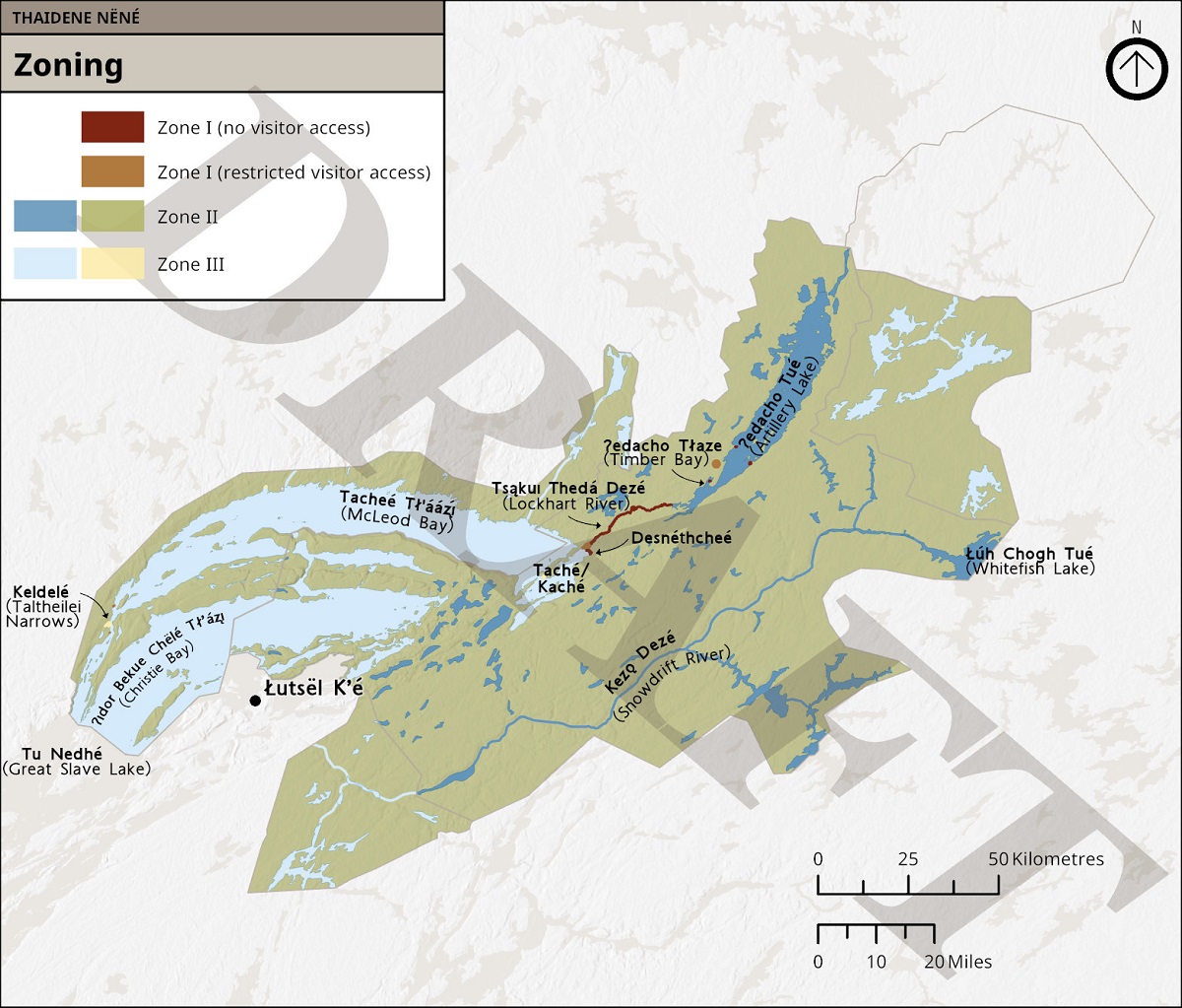 Map 1 – Overview of Thaidene Nëné Zoning
Map 1 – Overview of Thaidene Nëné Zoning
Temporal Closures
Temporal closures are tools to restrict visitor access to certain areas or activities for a specific period. These closures relate to various management needs, such as public safety, environmental protection, wildlife conservation, and/or to help facilitate harvesting activities for Indigenous peoples of the area. As there are different legislative regimes for the National Park Reserve and the Territorial Protected Area, the mechanism to apply temporal closures differs.
Zoning for Thaidene Nëné
Zone I locations
No Visitor Access
Desnéthcheé (Spiritual Gathering Site)
The community of Łutsël K’é spends time at Desnéthcheé for a spiritual gathering every summer. There is personal and community infrastructure at the site, including a church and arbour. The gathering site of Desnéthcheé is a culturally important area closed to visitors. Invited guests of the Łutsël K’é Dene First Nation are allowed.
Dzén Kı́n (Rat Lodge) and Tsá Kı́n (Beaver Lodge)
Dzén Kı́n and Tsá Kı́n are sacred places on Ɂedacho Tué (Artillery Lake) that are closed to visitor access. Interpretation about their importance will be provided.
Island in Ɂedacho Tł’ázı̨ (Timber Bay)
Gahdële, a powerful medicine man, is buried on this island in Ɂedacho Tł’ázı̨ on Ɂedacho Tué. Visitor access is not allowed.
Restricted Visitor Access – Guided/Accompanied Only
Taché /Kaché Village Site
Taché/Kaché is located at the mouth of Tsąkuı Thedá Dezé (Lockhart River). Visitors must be accompanied by Ni Hat’ni Dene, Parks Canada staff, or a licensed guide from a signatory Indigenous government.
Ɂedacho Tł’ázı̨ (Timber Bay) Village Site
This former village is very close to Ɂedacho Tué (Artillery Lake). The site is also near to a Ni Hat’ni Dene operational cabin that is located at Ɂedacho Tł’ázı̨. Visitors must be accompanied by Ni Hat’ni Dene, Parks Canada staff, or a licensed guide from a signatory Indigenous government.
Tsąkuı Thedá Dezé (Lockhart River)
Tsąkuı Thedá Dezé is sacred and includes Tsąkuı Thedá (Parry Falls). The Zone I area extends from the south end of Ɂedacho Tué (Artillery Lake) to the mouth of the river, including the islands located there. Sacred sites must be respected. They are not to be played with, or they lose their power. Unless otherwise noted, when visiting Tsąkuı Thedá Dezé Zone I, visitors must be accompanied by Thaidene Nëné, Ni Hat’ni Dene, Parks Canada staff, or a licensed guide from a signatory Indigenous government. Licensed guides from a signatory Indigenous government may use motorized boats for tours at the mouth of Tsąkuı Thedá Dezé (Lockhart River).
Tsąkuı Thedá Dezé Zone I includes areas where visitor access is further restricted:
Zone II locations
All areas of Thaidene Nëné not otherwise identified as a Zone I or Zone III are Zone II. This is the majority of the National Park Reserve and Territorial Protected Area . Designation of wilderness in the National Park Reserve through the National Parks of Canada Wilderness Area Declaration Regulations will not be pursued at this time.
Zone III locations
Tu Nedhé (Great Slave Lake)
The waters of Tu Nedhé serve as the front country of Thaidene Nëné, with motorized boating a key form of access and recreation.Tthe Kálįka Tué (Stark Lake)
Tthe Kálįka Tué waters in the National Park Reserve are Zone III to allow for the continuation of motorized boating.Waterbodies in the Territorial Protected Area
All waterbodies in the Territorial Protected Area are Zone III.
Reliance Fuel Cache and Commercial Lease
Reliance has significant infrastructure, more than other areas of the National Park Reserve, with several modern buildings and a fuel cache. The lands where this infrastructure is located are Zone III; this includes the Reliance fuel cache and the Trophy Lodge lease.
Keldelé (Taltheilei Narrows) Commercial Lease
The lease area for Great Slave Lake Lodge including the airstrip in the Territorial Protected Area is Zone III.
Tł’ąkĕle (Thompson Landing) Commercial Lease
The lease area for Indian Mountain Lodge in the Territorial Protected Area is Zone III.
Ɂena Tué (Gagnon Lake) Leases
The commercial leases on Gagnon Lake in the Territorial Protected Area are Zone III.
Other Important Sites
In addition to zoning, two other designations are used to identify sites: culturally/ecologically sensitive areas in the National Park Reserve; and sites of cultural importance within Thaidene Nëné.
Culturally and Environmentally Sensitive Areas
This designation within Thaidene Nëné applies only in the National Park Reserve. It is for smaller areas that contain significant and sensitive resources that require special protection or management. Culturally and ecologically sensitive areas can be applied within any of the zone types. Currently, no ecologically sensitive areas are identified.
Visitor use and/or resource management strategies will be defined by specific guidelines. Because of the sensitivity of these sites, they may not be shown on maps. As new information is obtained, it may be necessary to refine the boundaries of sensitive areas or to identify new ones. If necessary, this designation may be removed from some sites. Boundary changes will not require a revision to Thaıdene Nëné badı xá.
Taché/Kaché Region
The Taché/Kaché region is of significant cultural importance to the Łutsël K’é Dene First Nation. Within this region is the village site of the same name, gravesites and other sacred sites, the mouth of Tsąkuı Thedá and Desnéthcheé (the spiritual gathering site). Visitor guidelines for the Kaché Region will be developed as part of a site-specific plan. A rough outline of the Taché/Kaché region is shown in Appendix A; the map will be refined during development of the site-specific plan.
Nıtł’ë́r Nué Naá Tł’áázı (Wildbread Bay)
Nıtł’ë́r Nué Naá Tł’áázı is a culturally important area to the Łutsël K’é Dene First Nation. It is used annually in the late summer through to early fall for harvesting. Visitor access will be restricted during times of harvest. The closure will be time limited and seasonal.
Łúh Chogh Tué (Whitefish Lake) Village Site
This village site is an important birthplace and home for several families from Łutsël K’é. Work is on-going to understand this site more fully. Visitors must be accompanied by Thaidene Nëné, Ni Hat’ni Dene, Parks Canada staff, or a licensed guide from a signatory Indigenous government.
Sites of Cultural Importance
This designation within Thaidene Nëné applies to areas that are culturally important but may not have Thaidene Nëné specific visitor restrictions. Archaeological sites are located throughout Thaidene Nëné. Visitors are prohibited from disturbing archaeological sites under legislation. If a visitor comes across an archaeological site, they must not handle, move, or otherwise disturb archaeological artifacts.
Sites of Cultural Importance may be managed through other legislation and/or regulations to ensure a respectful relationship with these areas. Specific guidelines or protocols for each sensitive area may also exist or be developed to help inform visitor use, such as paying the land6. Because of the sensitivity of these sites, they may not be shown on maps; however, rules, guidelines and/or protocols will be communicated with visitors.
Hachoghe’s Shovel
Hachoghe’s Shovel is at the south end of Ɂedacho Tué (Artillery Lake). Ɂedacho Tué used to be called Tsátué (Beaver Lake) because there was a giant beaver living there. Hachoghe was a powerful person – known to other Dene as Yamǫ́rıa and Yamǫǫ̀zha. He protected the people from the giant animals, including the giant beavers. Hachoghe used a shovel to dig into the beaver’s lodge, only to have the beaver escape. Hachoghe put his shovel down to stop the beaver from getting away. But the beaver was so strong he broke it. The handle of the shovel is still visible. This site is accessible for visitors, but there are protocols for travellers to pay the land at this site when coming to Ɂedacho Tué.
Bet’sı́ghı́ (Utsingi Point)
Water is alive here. The site is accessible to visitors but there are traditional protocols encouraging all travellers to pay the land and be quiet and respectful when passing by Bet’sı́ghı́.
Village sites
There are many other villages sites within Thaidene Nëné. More will be done to better understand the sites and determine the best management approach, some may not be appropriate to identify.
Arctic Star Lodge
This lodge on the north shore of Kaché Kuwé (McLeod Bay) is an important area to Łutsël K’é Dene First Nation. Many members worked there for long periods of time that took them away from their families.
All Burial Sites
Burial sites are located throughout Thaidene Nëné, and burials continue there to this day. Visitor access to known and/or marked burial sites is prohibited within 10 metres. If a visitor comes across a burial site they should leave the immediate area.
6 Paying the land is a protocol where people pay the land and water with something valuable like tobacco, spruce boughs, tea, or sugar as a sign of respect.
Appendix A – Zoning Maps
Map 2: Zone I Desnéthcheé, Dzén Kı́n, Tsá Kı́n, Island in Ɂedacho Tł’ázı̨, Taché /Kaché Village Site, Ɂedacho Tł’ázı̨ Village Site, and Tsąkuı Thedá Dezé
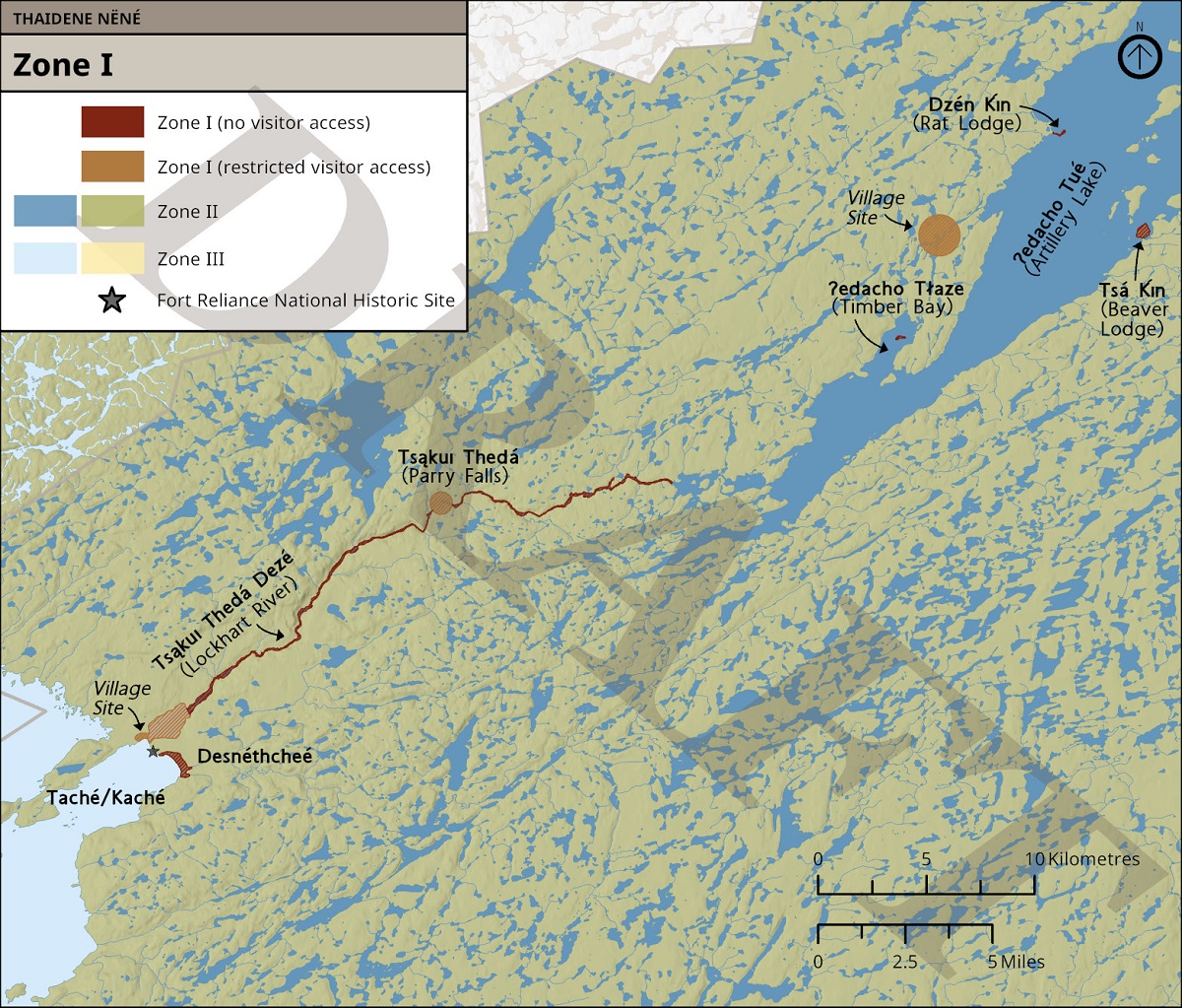
Map 2: Zone I Desnéthcheé, Dzén Kı́n, Tsá Kı́n, Island in Ɂedacho Tł’ázı̨, Taché /Kaché Village Site, Ɂedacho Tł’ázı̨ Village Site, and Tsąkuı Thedá Dezé
Map 3: Zone III Keldelé (Taltheilei Narrows) (Commercial Lease)

Map 3: Zone III Keldelé (Taltheilei Narrows) (Commercial Lease)
Map 4: Zone III Tthe Kálįka Tué (Stark Lake)
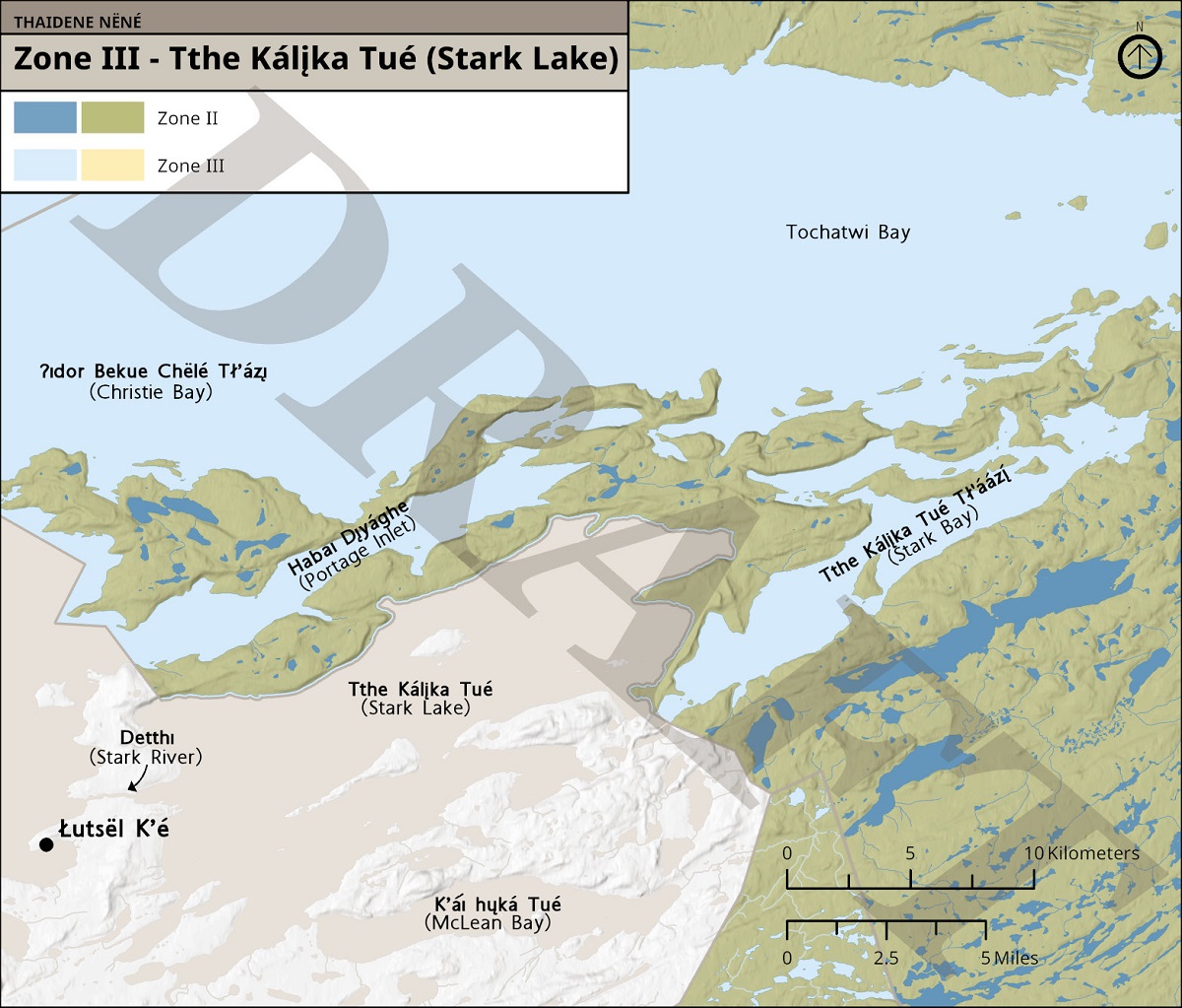
Map 4: Zone III Tthe Kálįka Tué (Stark Lake)
Map 5: Zone III Ɂena Tué (Gagnon Lake) Commercial Leases)

Map 5: Zone III Ɂena Tué (Gagnon Lake) Commercial Leases)
Map 6: Zone III Reliance Fuel Cache and Commercial Lease)
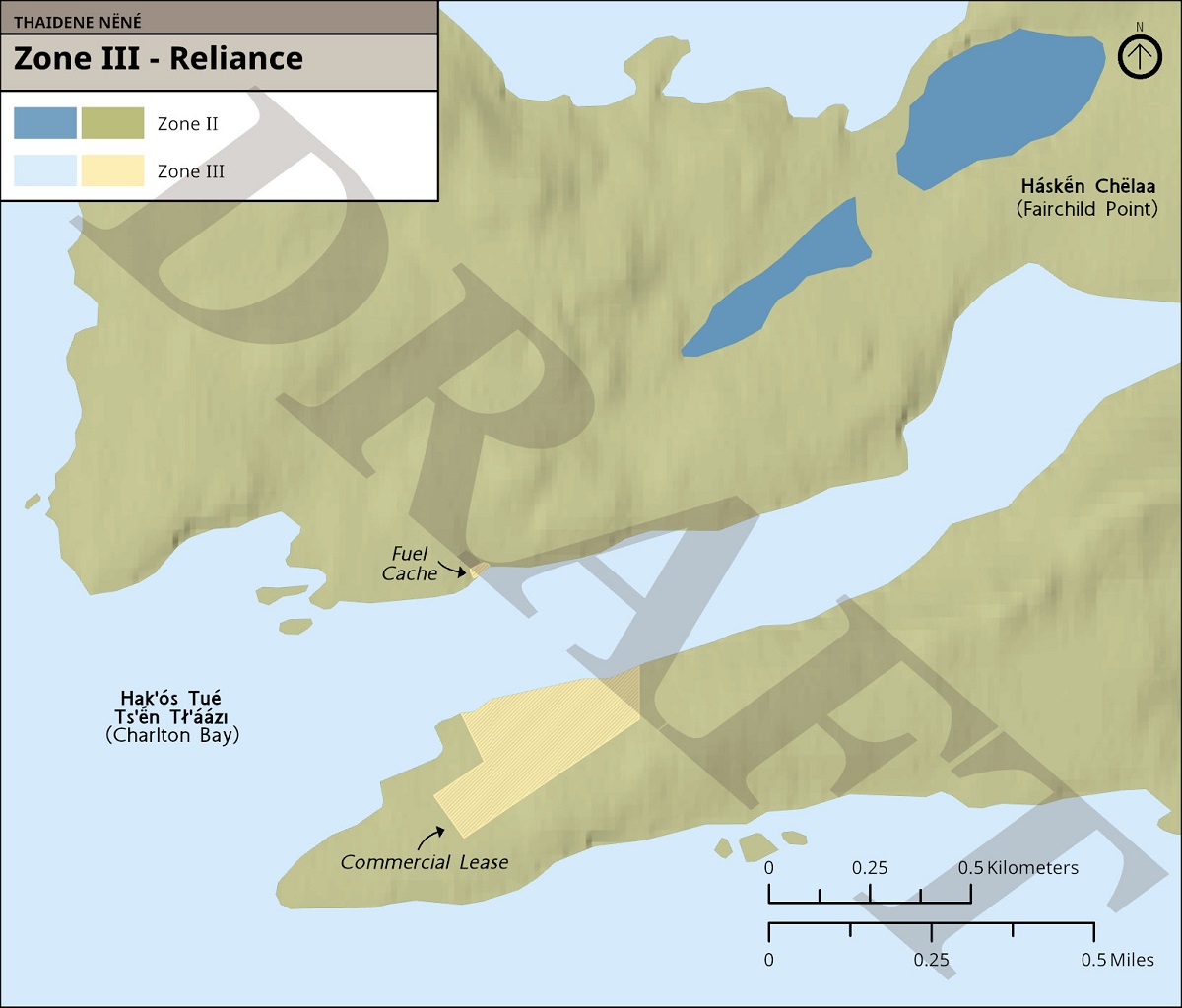
Map 6: Zone III Reliance Fuel Cache and Commercial Lease)
Map 7: Zone III Tł’ąkĕle (Commercial Lease)
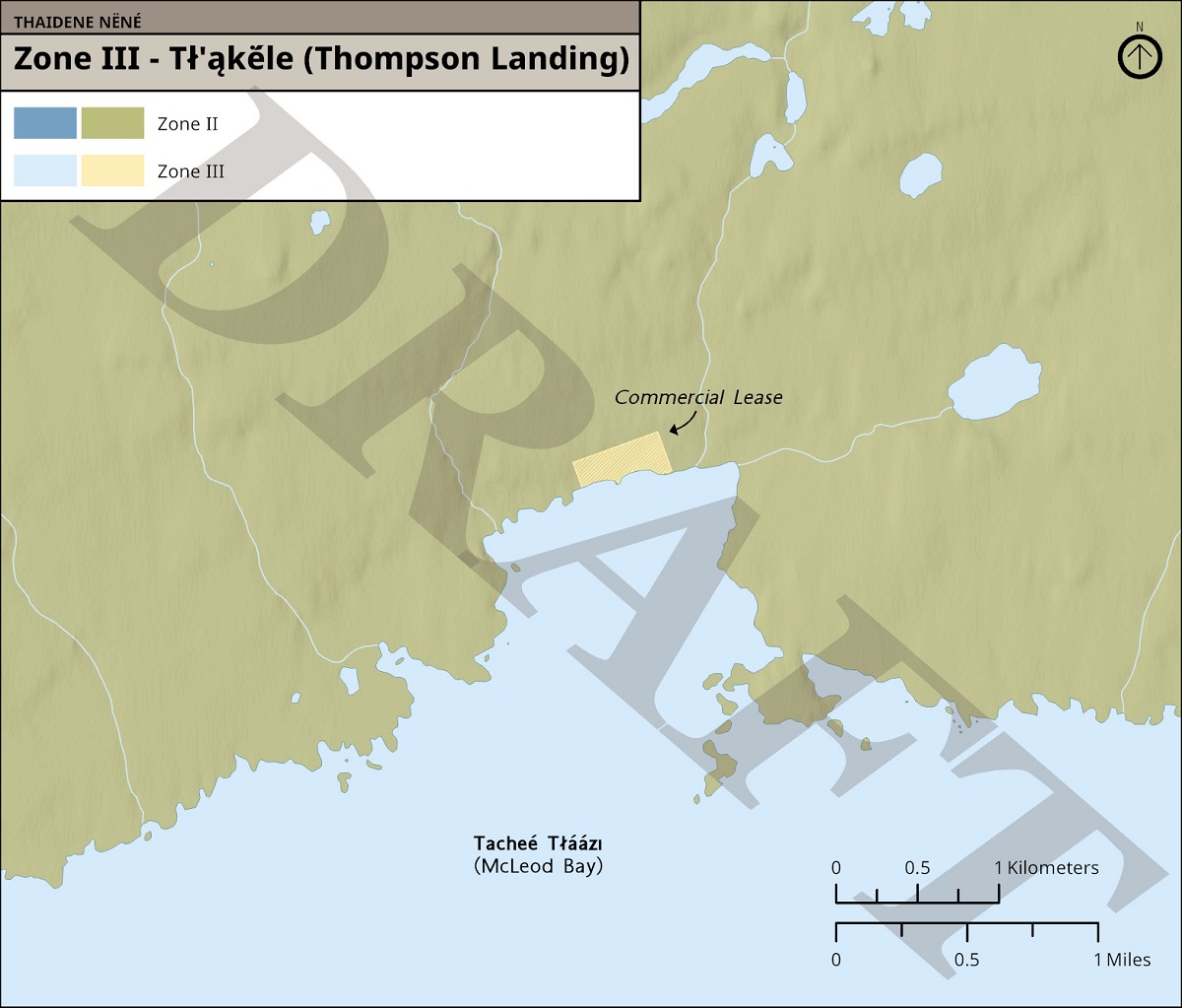
Map 7: Zone III Tł’ąkĕle (Commercial Lease)
Map 8: Culturally Sensitive Area - Taché/Kaché Region Draft Outline
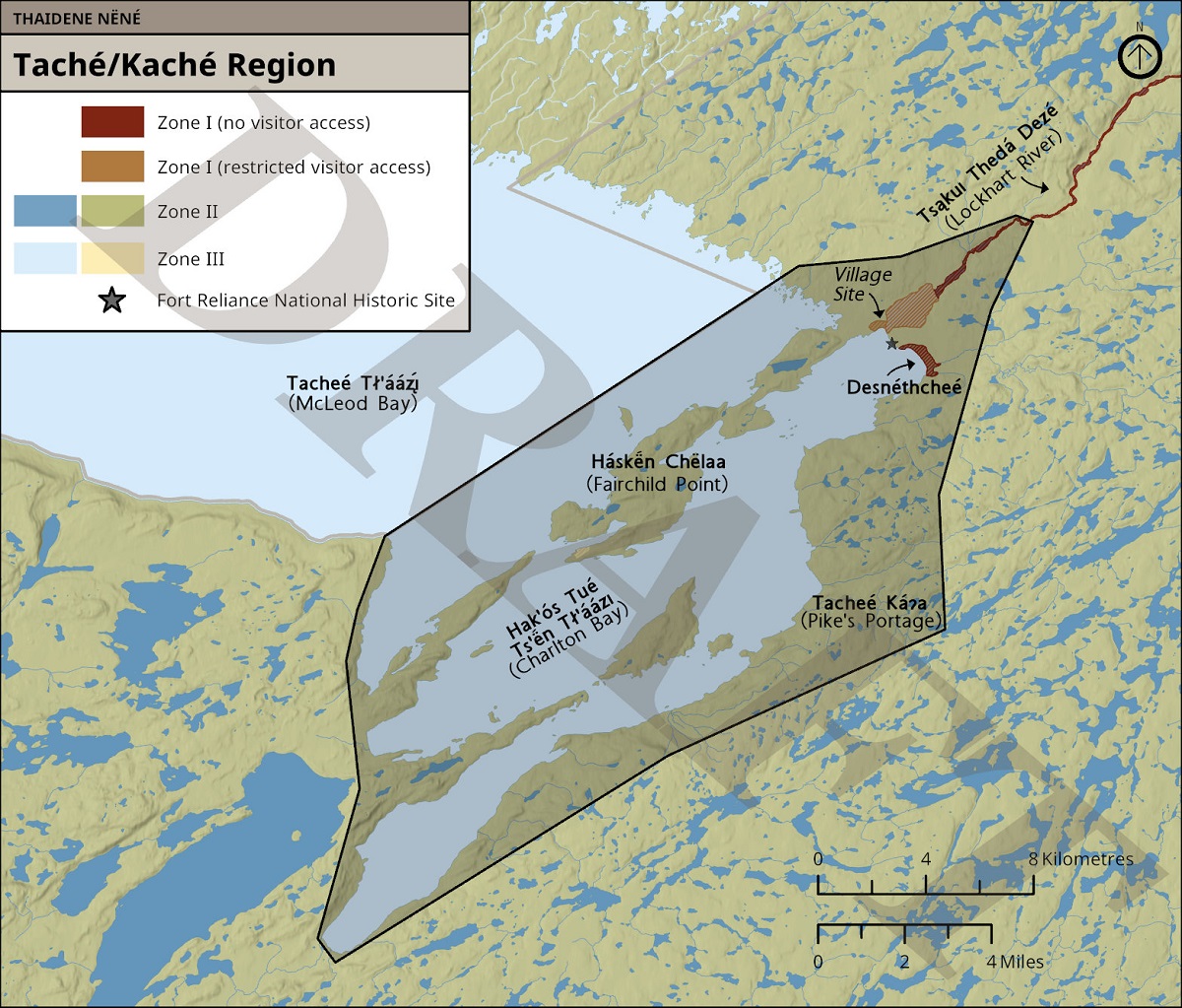
Map 8: Culturally Sensitive Area - Taché/Kaché Region Draft Outline
Share your thoughts
The comment period ended on April 28, 2024.
Feedback, will be considered by Thaıdene Nëné xá dá yáłtı and the shared management partners in the development of the final draft plan.
Community engagement sessions held:
| Community | Date | Time | Venue |
|---|---|---|---|
| Yellowknife | March 25, 2024 | 6:00pm to 8:30pm | Tree of Peace |
| Łutsël K’é | March 26, 2024 | 6:00pm to 8:00pm | Zah Lockhart Memorial Hall |
| Fort Smith | April 9, 2024 | 6:00pm to 8:00pm | Roaring Rapids Hall |
| Fort Resolution | April 10, 2024 | 5:00pm to 7:00pm | Community Hall |
| Hay River | April 11, 2024 | 6:00pm to 8:00pm | Métis Government Council Facility |
| Community | Date | Time | Venue |
|---|---|---|---|
| Yellowknife | April 17, 2024 | 10:00am to 2:00pm | Greenstone Building atrium (main floor, 5101 50th Avenue) |
Info bulletin
Info bulletin March/April 2024 (PDF 3.60 MB)
- Date modified :